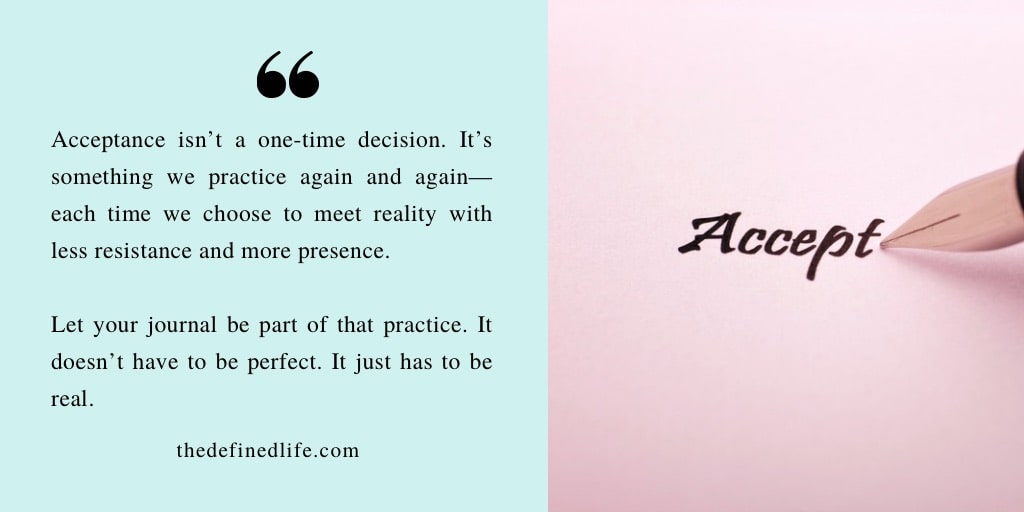
I always have to deal with the question, “Does acceptance simply mean giving up?” But it doesn’t. Acceptance is choosing to see what’s real—without running, avoiding, or forcing it into something else. It’s the brave, quiet decision to say: “This is what’s here. Let me meet it with honesty.” Learning how to practice acceptance is important in dealing with everything life puts us through.
Journaling is a beautiful tool for that. Not because it makes the hard parts go away, but because it gives you space to process them with care.
In this post, we’ll explore what acceptance really means—and how your journal can become a safe place to practice it.
Table of Contents
What Is Acceptance (And What It’s Not)
Acceptance is:
- Being honest about what you’re feeling or facing
- Letting go of the need to control everything
- Allowing yourself to be in the present—even when it’s hard
Recognizing what is, without harsh judgment
It’s not:
- Settling for things that hurt you
- Pretending everything’s fine when it isn’t
- Giving up on change
Acceptance creates the ground for healthy change—but it starts with clarity. And journaling can help bring that clarity into view.
Why Acceptance Is Necessary in Our Lives
We all go through seasons where things don’t unfold the way we hoped—relationships shift, plans fall apart, and life surprises us in ways we weren’t prepared for.
In those moments, it’s easy to resist. We replay what could’ve been, try to control what’s slipping away, or wish for a different reality. But that resistance often brings more pain than peace.
As Albus Dumbledore once said, “Understanding is the first step to acceptance, and only with acceptance can there be recovery.” And that feels deeply true.
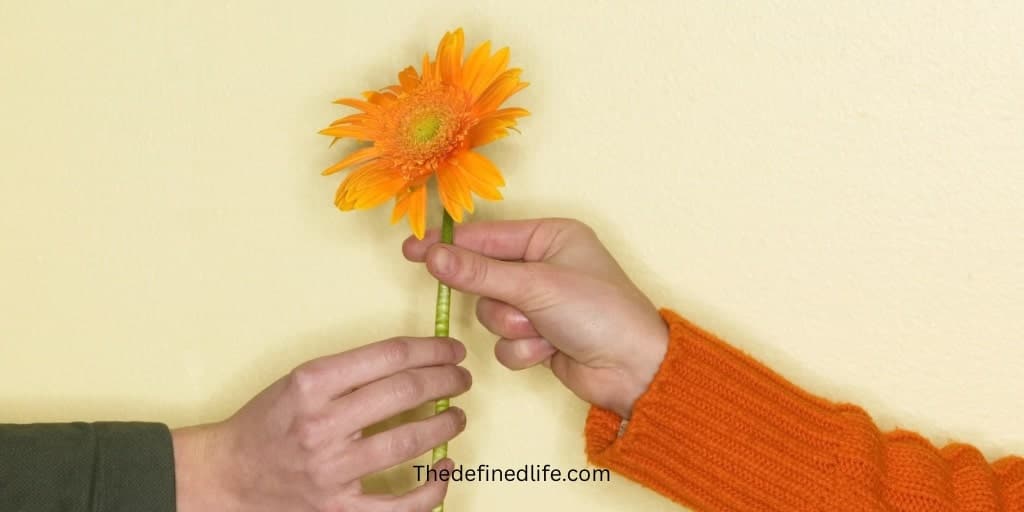
Acceptance isn’t about pretending everything’s fine. It’s not about giving up or pretending we are not hurt. It’s about living in the present moment without judgment. It’s the gentle shift from “Why is this happening?” to “This is what is. Now what do I need?”
When we stop resisting life, we start healing. We become stronger around our experiences instead of hardening. We begin to breathe more freely, trust more deeply, and move forward without carrying the weight of what we can’t change.
Acceptance invites clarity. It anchors us in the now. And while it doesn’t erase pain, it makes space for peace to grow—even in the middle of uncertainty.
Why Journaling Helps You Practice Acceptance
Writing slows you down. It puts space between the emotion and the reaction. Instead of spiraling through your thoughts, you start to witness them.
Through journaling, you can:
- Acknowledge hard feelings without shame
- Notice patterns you couldn’t see before
- Offer compassion to parts of yourself that feel stuck or scared
- Get honest about what you can control—and what you can’t
Most of all, journaling lets you be with whatever is true right now. You don’t have to fix it. Just feel it, hold it, write it.
If you’re looking for a simple way to build a mindfulness habit alongside your journaling, you might enjoy my printable Gentle Focus journal. It’s designed for quiet moments of self-check-in—with calming prompts that guide you to breathe, reflect, and come back to yourself. It pairs beautifully with acceptance work, especially on the days when your mind feels scattered or overwhelmed.
> Explore the Gentle Focus Journal here → Grab it for just $5.00
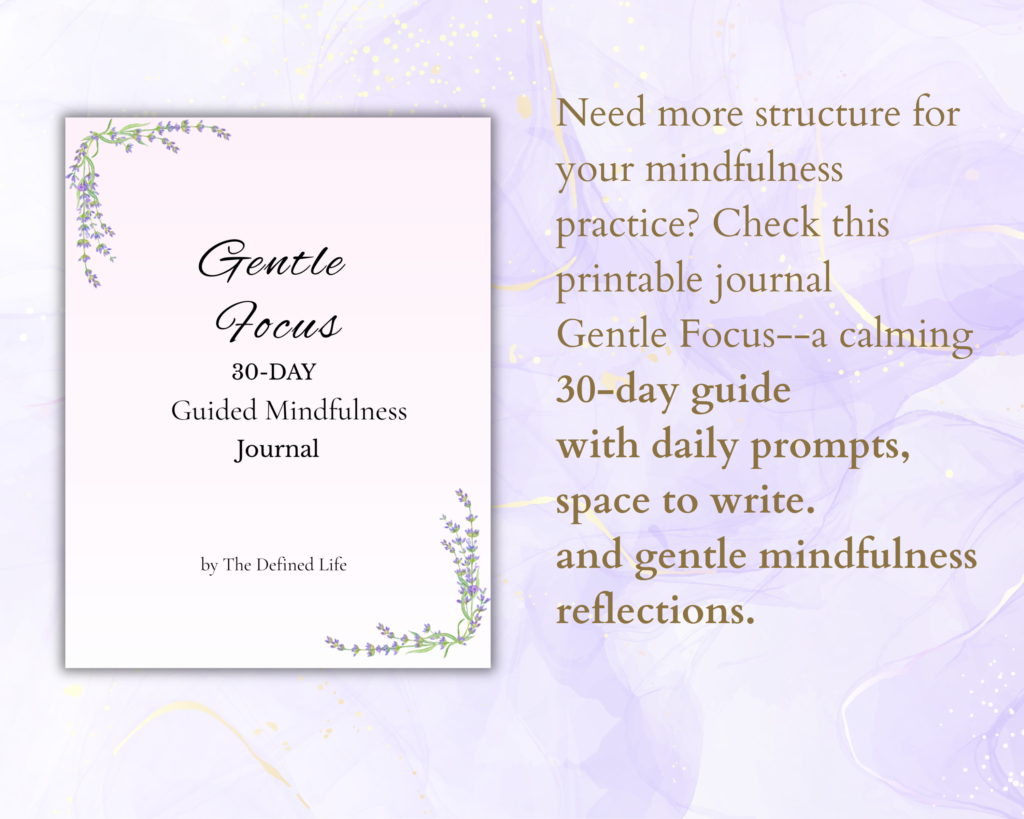
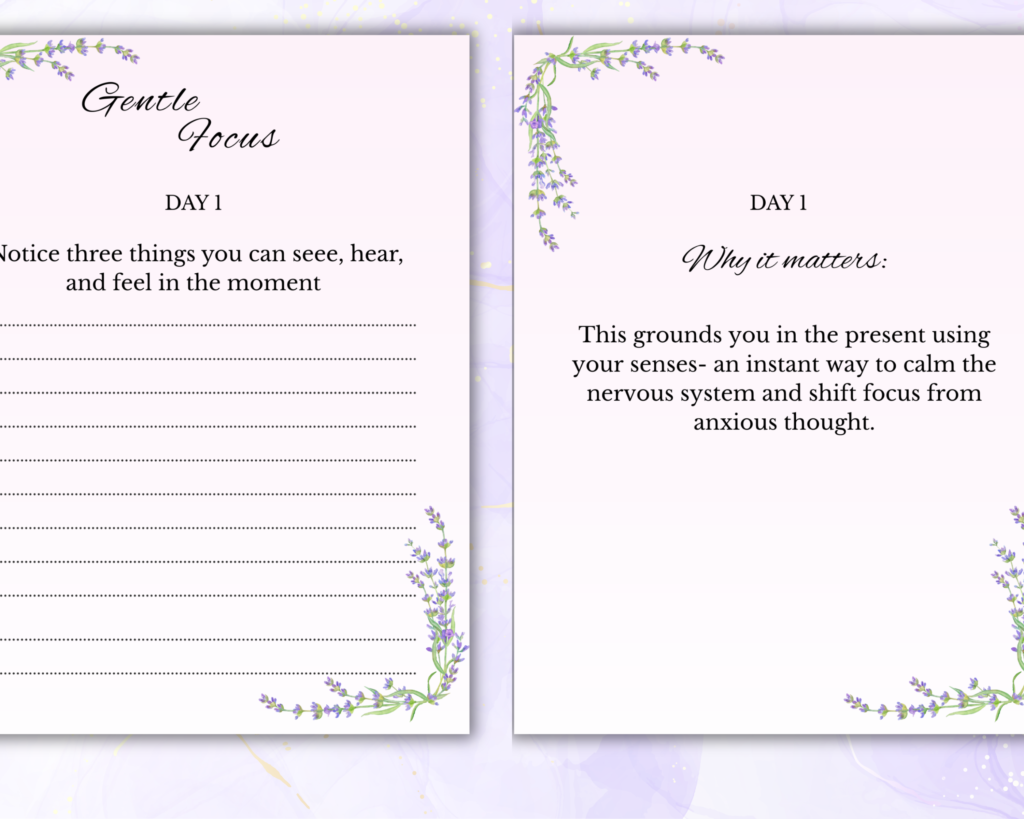
10 Journal Prompts to Explore Acceptance
Here are gentle prompts to help you lean into acceptance, one page at a time:
1. What am I resisting right now? What might happen if I softened that resistance?
2. What emotion feels loud today? Can I allow it to just be, without rushing it away?
3. Is there something I keep trying to change—but can’t? What does it feel like to let go of control?
4. What part of me needs more understanding right now?

5. Where in my life am I holding onto the past? How can I begin to release it?
6. What would it look like to accept this moment exactly as it is?
7. What’s something I used to fight against—but have slowly come to accept?
8. Can I write a letter of kindness to the version of me that’s struggling?
9. What helps me feel grounded when things are uncertain?
10. In what ways can I choose peace today, even if things are unfinished?
Make Acceptance Feel Tangible
Acceptance can feel unclear, especially when you’re sitting with emotions that don’t have neat solutions. That’s where creative tools come in. For me, I sometimes pair journaling with simple visual elements—a piece of vintage paper, a soft color, or a tag I tuck a thought behind.
This kind of mixed journaling (often called junk journaling) makes the process feel less like pressure and more like a ritual. You don’t have to write paragraphs. You can layer a quote, collage a page, or slip a reflection into a little envelope. It becomes a visual practice of acceptance—letting things take shape, just as they are.
You can use soft printable pieces from something like Faded Garden or Lavender Dreams—kits I designed to hold space for gentle self-reflection. But really, any paper that feels calming to you will do. You can click on the images to check them out
One thing I’ve found helpful in acceptance journaling is creating a space that feels calming and honest. I like using printable journal kits—not just to decorate, but to build an environment where reflection feels softer.
When I need to stay grounded, I turn to Rustic Garden Pages with its earthy tones and textures. For emotional processing or tender memories, Faded Garden helps me slow down and really sit with what I feel.
Lavender Dreams is what I reach for when I need stillness or clarity, especially during anxious seasons. And when I’m reflecting on change, healing, or time itself, Wander Through Time gives me a visual language for those thoughts I don’t always know how to name.

These small, creative choices help me return to the page with more presence—and less pressure.
Final Thoughts on How to Practice Acceptance Through Journaling
Acceptance isn’t a one-time decision. It’s something we practice again and again—each time we choose to meet reality with less resistance and more presence.
Let your journal be part of that practice. It doesn’t have to be perfect. It just has to be real.
Whenever you’re scribbling frustrations, layering papers, or writing a quiet “I’m doing the best I can”—you’re building trust with yourself.
That’s the beginning of peace.
Love and light,




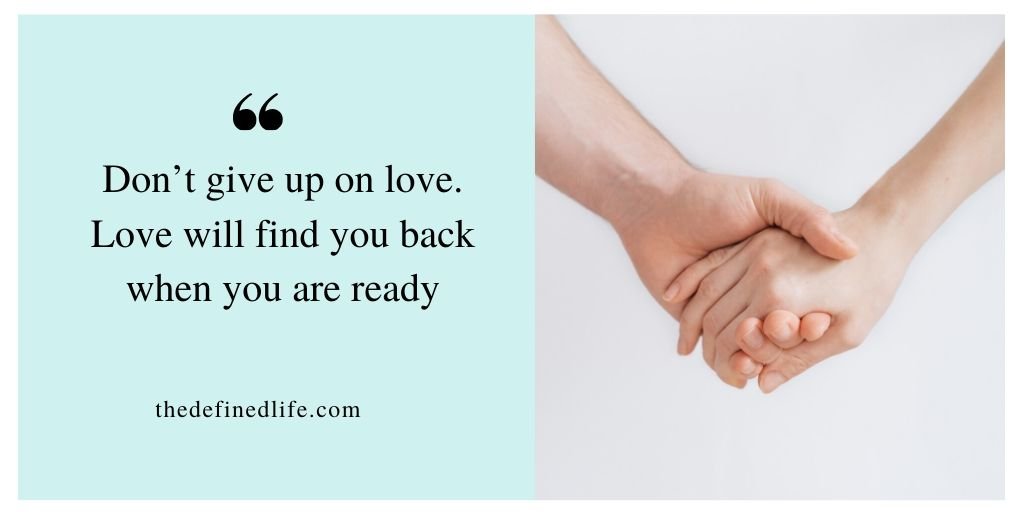




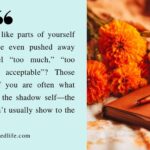

Leave a Reply